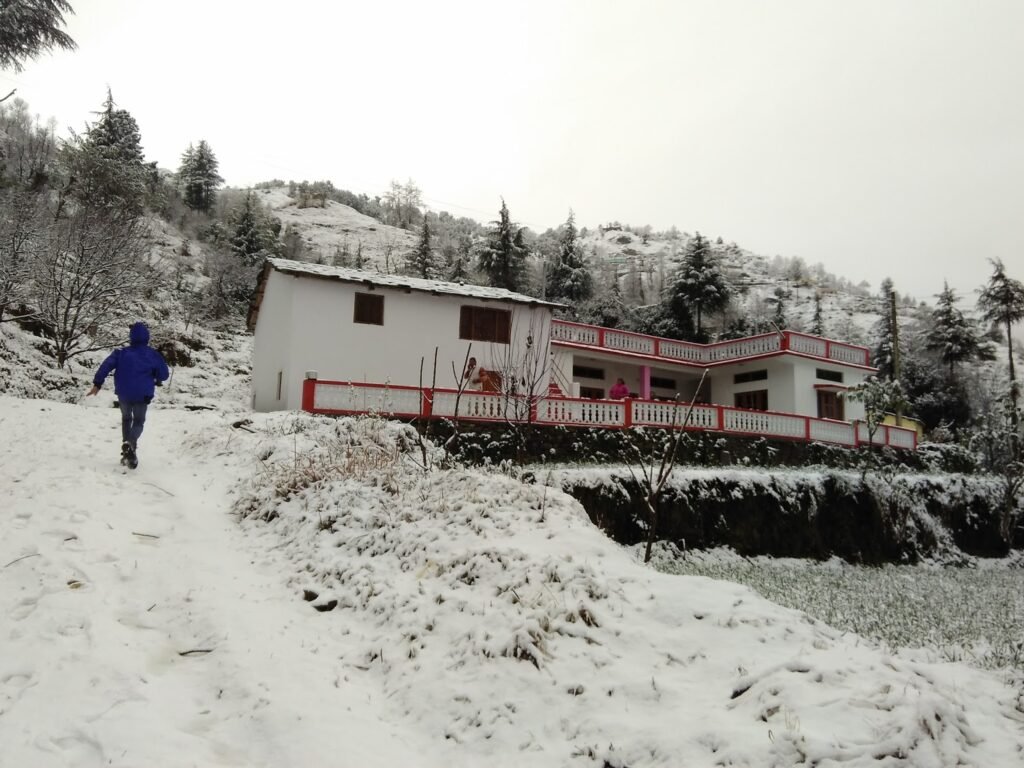Located in the peaceful Sirmour district of Himachal Pradesh, the offbeat town of Nohradhar is a traveler’s secret paradise that promises peace and adventure. As the base camp for the famous Churdhar Peak trek, knowing Nohradhar’s weather is key to ensuring a safe and enjoyable trip. This comprehensive guide will take you through the seasonal weather, temperatures, and the best time to visit this beauty spot.
A Seasonal Breakdown of Nohradhar’s Climate
Nohradhar has three different seasons: summer, monsoon, and winter. Each season is distinct, with its own beauty, welcoming a particular kind of traveler.
Summer (April to June): A Pleasant Retreat
Summer in Nohradhar is pleasant and mild, with a great relief from the blistering heat of the plains.
Temperature: The temperature during this time is usually between a nice 10 degrees celsius and a warm 25 degrees celsius.
Weather Conditions: Look forward to clear skies, plenty of sunshine, and a light breeze. This is the time for peak tourism, and rightly so. The climate is perfect for sightseeing, trekking, and other out-of-door activities. The highly popular Churdhar trek, which shuts down for heavy snowfall, gets opened up here, and adventure sport lovers flock to the region.
What to Bring: A good sunscreen, a sun hat, sunglasses, and trekking shoes are a must. The evenings can get quite cool, so a light jacket or shawl would be advisable.
Monsoon (July to September): Verdant and Lush
The monsoon season turns Nohradhar into a lush green haven. The rain-harassed mountains are a feast to the eyes, although this season has its own flaws.
Temperature: The temperatures are cold and comfortable during the monsoon, usually ranging from 7 degrees celsius to 18 degrees celsius.
Weather Conditions: Moderate to heavy rainfall in the area can result in landslides and slippery trek routes. When the greenery is in full bloom, outdoor sports, particularly the Churdhar trek, are risky and usually not advised.
What to Pack: A waterproof jacket, an umbrella, sturdy non-slip footwear, and quick-drying clothes are a must. It’s also a good idea to have a waterproof bag for your electronics.

Winter (October to March): A Snowy Wonderland
Winter in Nohradhar is a magical experience, with the landscape often blanketed in a thick layer of snow.
Temperature: During winter, the months are cold and the temperature drops considerably. Watch out for the mercury to fall between a freezing −9 degrees celsius and 8 degrees celsius.
Weather Conditions: December, January, and February are usually the months when there is heavy snowfall, turning Nohradhar into a snow haven. The weather is mostly clear, providing magnificent sights of the snow peaks. Although the Churdhar trek is not accessible during the peak winter season, the town provides breathtaking views and a peaceful ambiance.
What Pack: Heavy woolens, thermals, an insulated jacket, snow shoes, gloves, a woolen cap, and a muffler are absolutely essentials.
Best Time to Visit Nohradhar
The “best” time to visit Nohradhar depends mostly on your interest:
For Trekkers and Adventure Seekers: The best period for the Churdhar trek and other activities in the wild is summer, between April and June, and again later in the post-monsoon season, from late September to November. The weather is good, and the paths are safe and clear.
For a Peaceful, Scenic Escape: If you would like to avoid the masses and soak up the tranquil charm of the Himalayas, April, May, October, and November are the best months. The climate is pleasant, and the scenery is at its picturesque finest.
For Snow Enthusiasts: To witness the wonder of snowfall, visit between late December and February. Prepare for chilly temperatures and possible road blockage from heavy snowfall.
Nohradhar and the Churdhar Trek: Weather is Everything
The Churdhar Peak trek remains the main draw for the majority of travelers to Nohradhar. Standing at 3,647 meters above sea level, the climactic weather on the trek can shift at any moment. It’s crucial to prepare adequately and consult the weather forecast prior to tackling this demanding but rewarding trek. The trek is overall regarded as secure and available between April and November, with the exception of the peak monsoon months.
As a seasoned trekker or a leisure tourist, Nohradhar’s climatic conditions strongly determine the nature of your experience. Knowing its seasonal variations, you can schedule your trip to enjoy the best this Himalayan paradise has to offer.
